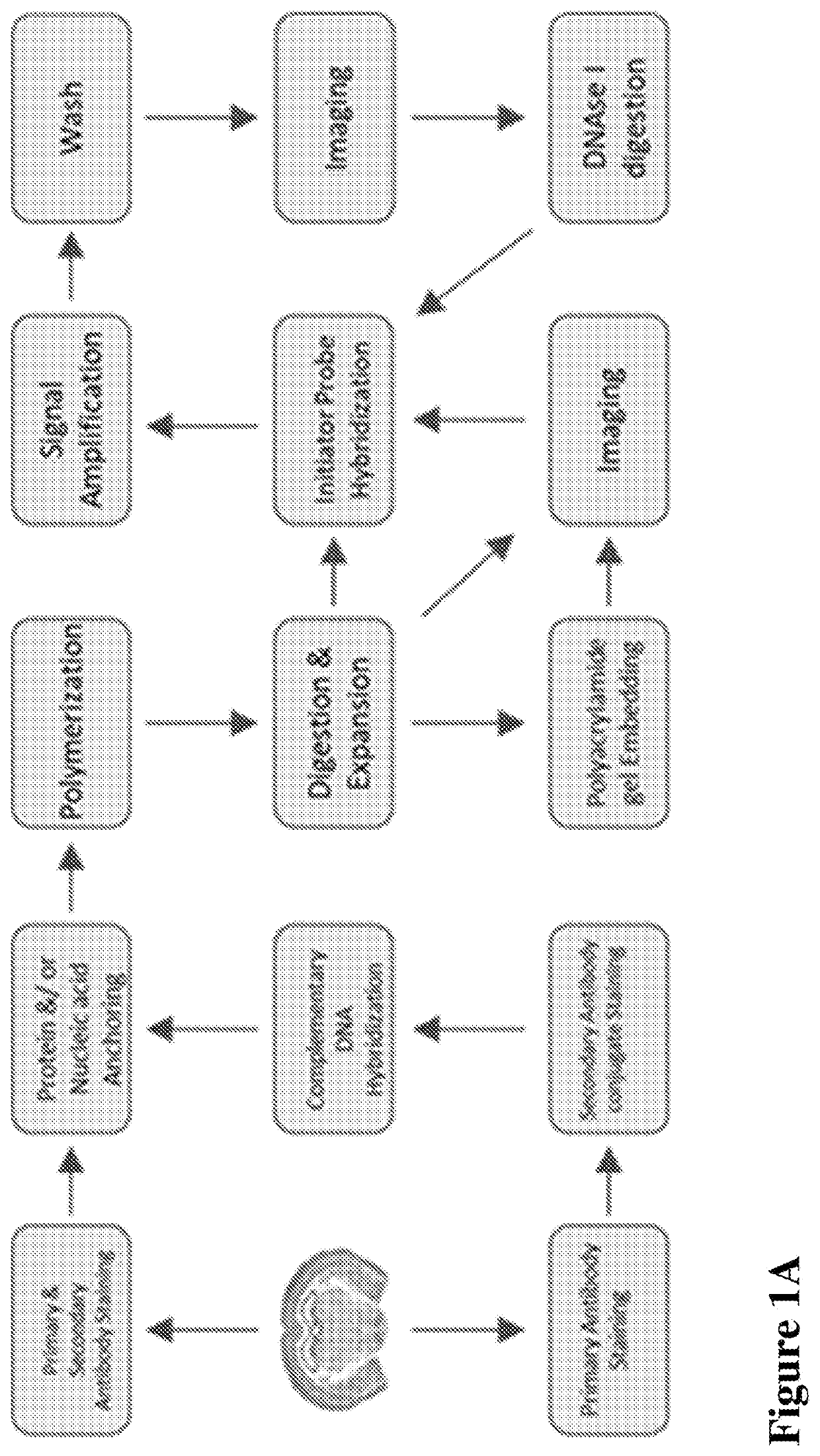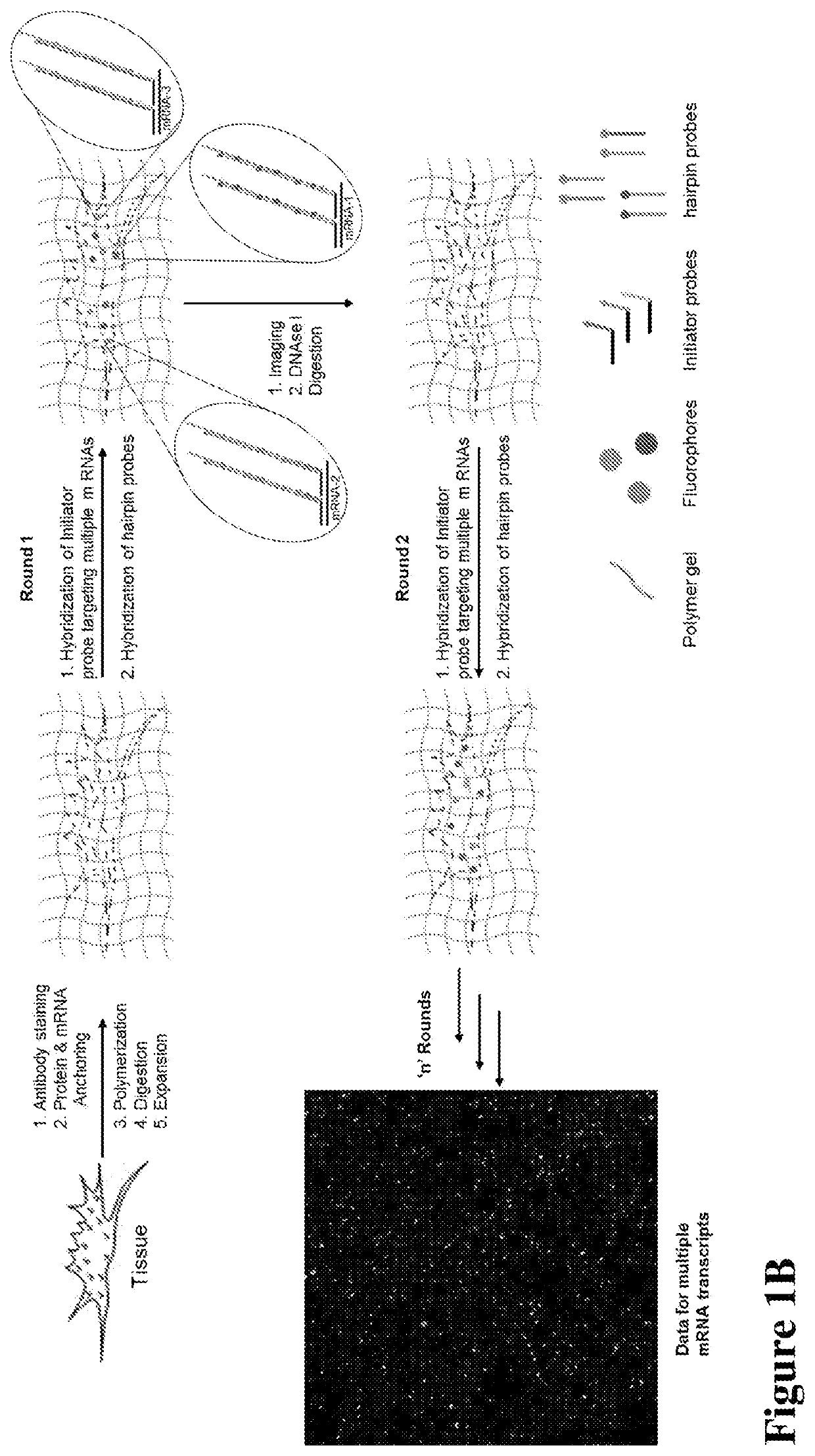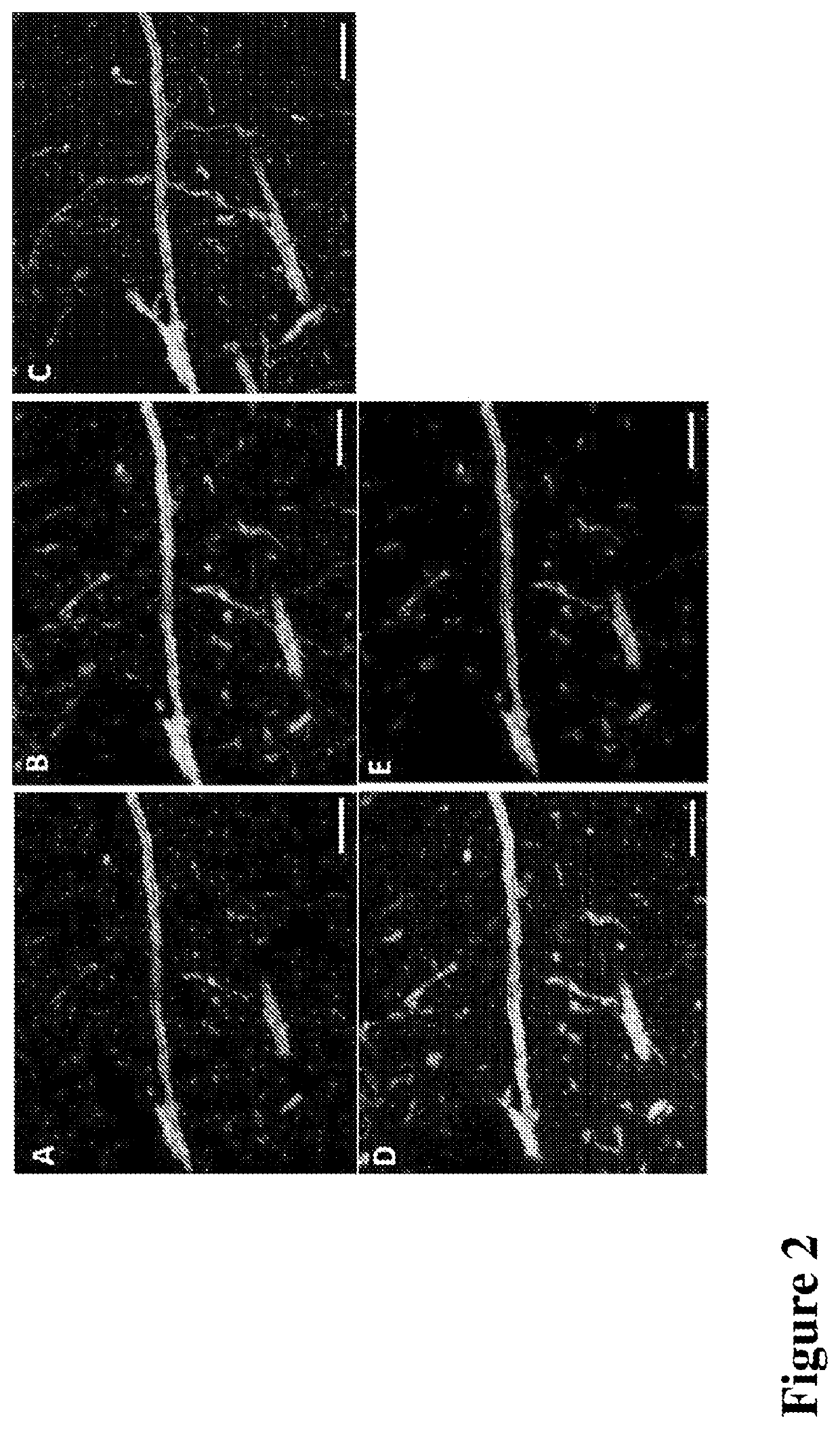Multiplexed in situ hybridization of tissue sections for spatially resolved transcriptomics with expansion microscopy
a transcriptomics and expansion microscopy technology, applied in the field of imaging, can solve the problems of reducing the accuracy of rna expression level quantification, requiring ultra-thin sections of specimens, and limited imaging of rna
- Summary
- Abstract
- Description
- Claims
- Application Information
AI Technical Summary
Benefits of technology
Problems solved by technology
Method used
Image
Examples
examples
Materials and Methods
[0149]Antibody staining, Polymerization and Expansion: Brain slices taken from the cryo-protectant solution were washed with 1×PBS and blocked with blocking buffer (5% normal donkey serum and 0.1% TritonX-100 in 1×PBS) for 2 hours at room temperature or overnight at 4 ° C. Slices were incubated with respective primary and secondary antibodies for 6 hours at room temperature (RT) or overnight at 4 ° C. Upon washing with 1×PBS after each antibody incubation, slices were washed with MOPs buffer for 30 minutes, then incubated in a solution of anchoring reagents Acryloyl-X (6-((acryloyl)amino)hexanoic acid succinimidyl ester; 100 μg / mL) and NucliX (FIG. 3A;100 μg / mL) in MOPs buffer for 6 hours or overnight at room temperature. Anchoring reagent solution was removed and slices were washed with 1×PBS three times. Then slices were incubated in monomer solution for 10 minutes with rocking at RT. Polymerization was initiated by adding initiator (10% APS) and accelerator (...
PUM
| Property | Measurement | Unit |
|---|---|---|
| dissociation constant | aaaaa | aaaaa |
| dissociation constant | aaaaa | aaaaa |
| dissociation constant | aaaaa | aaaaa |
Abstract
Description
Claims
Application Information
 Login to View More
Login to View More - R&D
- Intellectual Property
- Life Sciences
- Materials
- Tech Scout
- Unparalleled Data Quality
- Higher Quality Content
- 60% Fewer Hallucinations
Browse by: Latest US Patents, China's latest patents, Technical Efficacy Thesaurus, Application Domain, Technology Topic, Popular Technical Reports.
© 2025 PatSnap. All rights reserved.Legal|Privacy policy|Modern Slavery Act Transparency Statement|Sitemap|About US| Contact US: help@patsnap.com



